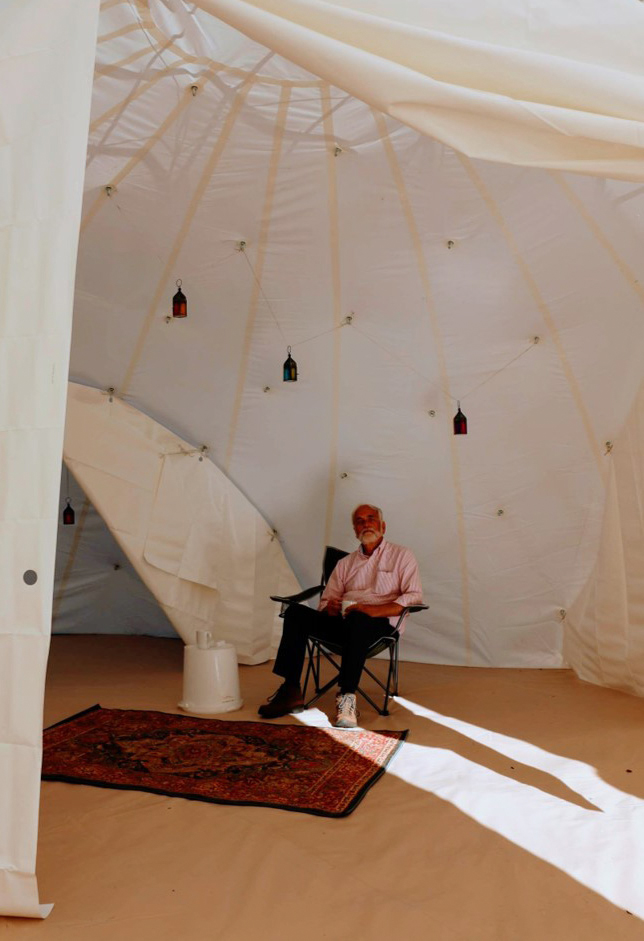SheltAir
_
Gregory Quinn, Swinburne University of Technology
Elastic gridshells are celebrated for their striking biomimetic curves, long spans and efficient material usage. Constructed from a grid mechanism of slender beams, an elastic gridshell is assembled on a flat surface then repositioned into its final curved shape - after which stabilising elements are added, and the structure becomes a stiff load-bearing shell. While elastic gridshells are efficient in their built-state, the established methods with which to erect them (‘lift up’, ‘push up’ and ‘ease down’) are associated with substantial complexity, cost and time which inhibit their adoption. The central research question of SheltAir asks whether elastic gridshells can be erected using pneumatic falsework (i.e. ‘inflate’), if so, how and what would be the implications of doing so? This project takes this simple and novel idea of pneumatically erecting elastic gridshells and develops it to fruition in a concise, logical and innovative way in which the narrative recounts a successful example of design through research. The work presented here proves that the pneumatic erection of elastic gridshells is not only feasible but offers many advantages (such as the speed of erection, structural robustness and architectural qualities) over existing shelters for humanitarian, event and architectural applications. The first of two demonstrators spanned 14m and was designed as a summer event shelter whereas the second 10m span demonstrator was designed as a multi-family disaster-relief shelter specifically for the extreme weather conditions and usage requirements of the Azraq refugee camp in Jordan. The novel design in this project takes inspiration from Bedouin dwellings and insists that disaster-relief shelters need not be, in fact must not be, overly utilitarian in their design as they provide not only environmental shelter but crucially are places where the emotional healing of suffering people can begin. Feedback from residents of the Azraq camp reveal that there is significant attraction to this biomimetic design, particularly from women. The importance of large shelters for medical treatment, social convalescence and religious gatherings in refugee or disaster-stricken areas is largely neglected due to the necessary and immediate focus on smaller family dwellings but also due to the cost, time, complexity and energy demands associated with the construction of larger shelters. The system presented here offers an exciting solution to these challenges and its application in the future.
_
Dr Gregory Quinn_ is a course leader for Architectural Engineering at Swinburne, Gregory Quinn pursues innovation by navigating between the arts and sciences in all his professional pursuits.
Image: SheltAir prototype in disaster-relief context taking inspiration from Bedouin architecture.
